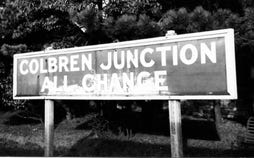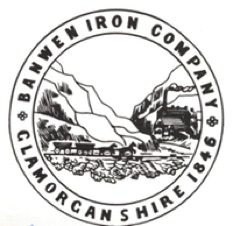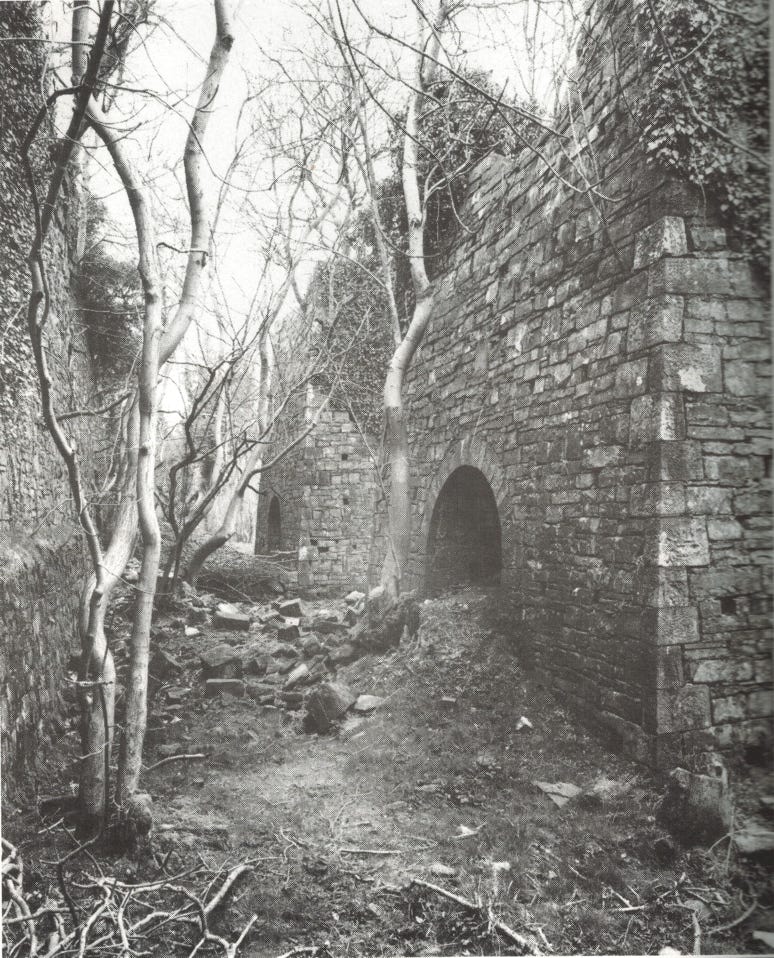G. A. HENTY IN SOUTH WALES.
FUTILE ATTEMPT TO BECOME AN IRON MASTER. UNFORTUNATE ENTERPRISE ON THE BANWEN.
BY FRANKLEN G. EVANS, J.P.
In your interesting account of the varied career of the late George A. Henty in the Surveyor's Department in the Crimea and as war correspondent, novelist, and writer of tales for boys you incidentally mention that at one time he was engaged in mining in South Wales. With regard to his mining experiences, it may interest your readers to learn something of his short residence in Wales and what happened to him there. It is a curious and romantic story. In the autumn of 1852, after a time of depression, a revival in Welsh ironmaking set in. There was an old ironworks on the Banwen, a place situated on the ridge that separates the Vale of Neath from the Swansea Valley, and not far from the Onllwyn Ironworks. This Banwen property was advertised to let, and the announcement caught the eye of Mr. Henty's father, who had made a moderate fortune in some business in London, but was absolutely ignorant of the smallest knowledge of the iron industry. Mr. Henty, senior, having heard of the large fortunes made by Welsh ironmasters, seems to have thought that he had only to embark in the business and do likewise; so be took the place, and shortly came into the district. He brought with him Mrs. Henty, two eons, George A., aged twenty, and Frederick, aged eighteen, and a daughter scarcely grown up; and they resided at a. farmhouse near the works. The Banwen was a wild, bleak, desolate region, with a large amount of bog in the neighbourhood, a. startling contract to the smiling beauty of the Neath Valley close by. The works were old, obsolete, and in poor repair. The description given by Dickens of Eden in "Martin Chuzzlewit" would not have been very wide of the mark applied to this locality, and the Hentys required all Mark Tapley's capacity for being jolly under adverse circumstances to be able to endure it. Operations were commenced in January, 1853, and throughout the whole of that year the result was one monotonous record of loss and disaster. There was no proper approach to the works, and materials had to be hauled in sledges over the hills. In doing this they came into collision with a neighbouring land- owner, who denied any right of way, and had a deep trench out in the yard of a homestead through which the mountain track passed, so as to prevent the traffic. This trench was filled up again by the Hentys, and in turn emptied by the landowner. So things went on, but there was no legal action, and the dispute was only brought to an end by the complete collapse of the undertaking. In spite of these troubles and anxieties, the young folks of the family, who were high-spirited and enterprising, managed to get some little brightness into their lives in rambling through the charming scenery of the Neath Valley, and visiting the numerous waterfalls, the renowned Ystradfellte Cave, where the Fellte River runs underground, completely lost to sight, for 300 yards, and other objects of interest. These amusements, with an occasional picnic or musical evening, helped to make their sad lot endurable. The whole business only lasted a twelvemonth, and Mr. Henty lost a large amount of capital, and then returned with his family to London, a sadder and, unhappily, a much poorer man. This unfortunate adventure destroyed all hope of the young Hentys becoming iron- masters, so they had to look out for some other opening for their talents and energies. The opportunity soon offered. In the late summer of 1854 Great Britain and France threw in their lot with Turkey against Russia, and an expedition to the Crimea was determined on, and the two young Hentys obtained appointments in the Oommissariat Depart- ment of the Army and sailed for the Crimea,. During that memorable winter the hardships of the campaign proved too much for the younger brother, Frederick Henty, and he died of typhoid fever. The elder - George A. Henty—weathered the storm of battle and the elements, and gradually began to take notes "of passing events” and sent them to the news- papers. With this instructive experience he soon blossomed out into a full-blown war cor- respondent, and continued in that capacity for several years on many battlefields. He afterwards took to writing novels and boys' books, in all of which he met with great success and popularity. Some of your contemporaries are in error in assuming that Henty's mining episode was after the Crimean War. His brief adjourn in Wales occurred when he was only 20 years old, and it was his first experience of real life. The derivation of the word Banwen, I take it, is from Ban (a high place) and Wen (white), from the bleached appearance given to it by the long grass that abounds there when it is withered. This grass is called "Gwynion Waun" by the natives, and is or at least was extensively used by the poorer inhabitants for filling beds, for which purpose it was cut in the dry weather of March and April. It is interesting to reflect how people's destinies are governed by events, which lead them on inexorably without their knowledge or consent. If the ironworks had succeeded we might have known Henty as a prosperous ironmaster, but we should probably have lost his literary labours, and certainly his exciting adventures as a war correspondent in many distant lands.



